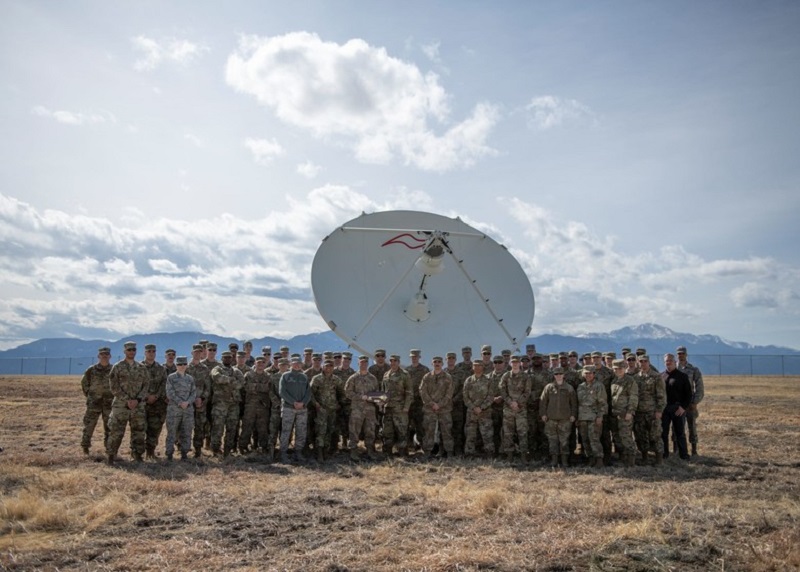
Washington. The Counter Communications System of the US Space Force still shrouded in secrecy will be used to jam adversaries’ communications in a conflict.
“It’s a deployable system basically for counter communications. Think of it as a platform that various custom missions run on,” said Praveen Kurian, General Manager of L3Harris’ space control division. “It doesn’t permanently damage [targets], right? You’re talking about reversibly denying communications, and then when you shut down your system, you’re back to being able to operate.”
America’s newest armed service got an updated version of the system — Block 10.2 — in March, but a leaner, more capable generation is already in the works.
When CCS Block 10.2 achieved initial operating capability on March 9, the Space Force hailed the system as its first offensive weapon system; the first generation of the system was delivered to the military in 2004. The former Harris Corporation was a contributor to that system, said Kurian, and now L3Harris has been the primary contractor to the two major upgrades to the system since then — first, Block 10.1 and now Block 10.2.
Due to the secretive nature of CCS, it’s difficult to sort out the full extent and limitations of the technology. What is known is that CCS is a transportable electronic warfare system that can reversibly deny adversaries’ satellite communications. Space Force budget documents provide additional insight, noting “CCS provides expeditionary, deployable, reversible offensive space control (OCS) effects applicable across the full spectrum of conflict.”
But as noted in the Secure World Foundation’s 2020 “Global Counterspace Capabilities” report: “There is no public information on any technical characteristic of the CCS, such as frequency ranges, power levels and waveforms.”
The authors of that report concluded that the system is likely able to jam C-, Ku- and X-band frequencies, and that it primarily targets communications satellites operating in geostationary orbit.
With limited information on how CCS does what it does, it’s difficult to explain how 10.2 improves on its predecessors.
“The 10.2 system gives significantly expanded capability in terms of what it can run, what kind of missions it can run,” said Kurian, who added that both the 10.1 and 10.2 upgrades provided more transportability than the first-generation system, allowing them to be deployed where needed.
And L3Harris is already working on the next generation of the system, dubbed Meadowlands. On January 24, the Air Force awarded the company $72 million to sustain the Space and Missile Systems Center’s ground-based electronic warfare systems portfolio and develop Meadowlands.
While there was no effort to physically shrink the system from 10.1 to 10.2, Meadowlands will significantly reduce the size and form factor of the system, said Kurian, though he couldn’t share details.
“(Meadowlands) will provide even more capability than the 10.2 system provides today,” he said.
However, Meadowlands is not meant to replace the 10.2 system. “Meadowlands is intended to deploy really alongside [10.2] just to provide even more additional capability,” Kurian said. “It will do what the 10.2 system does, plus more.”
Meadowlands is currently in development with production expected to begin in fiscal 2021, said Kurian. According to the contract announcement, work is expected to be completed by February 29, 2024.








